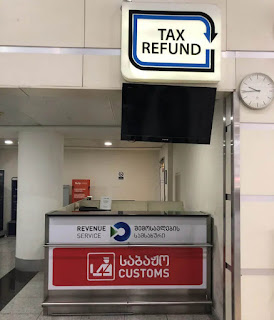Mexican Hospitality
Hospitality exchange experiences around Mexico in San Carlos (Guaymas), Guadalajara, Mexico City and Cancun.
We went to Mexico thinking we would just pass through the vast country on our way to Central America, but we ended up staying two months—thanks to the wonderfully welcoming and hospitable Mexicans and expatriates residing there.
Hospitality exchange works like a dream in Mexico. It proved to be a complete opposite to the United States where we could not find a single host. Particularly big cities in Mexico have an active network of members who both host and organise various weekly activities. Finding hosts was easy, and we enjoyed every second of our stay with them.
During the two months, we crossed the whole country from Tijuana to Chetumal stopping in San Carlos (Guaymas), Guadalajara, Mexico City, Cancun, and Chetumal. Our route was chosen according to the people we visited.
Of these five places, the north became our favourite. We loved the mountains and cactuses, the dry warm weather in September-October, clear blue skies, and the Pacific. Everyone was warning us that North Mexico is very dangerous, but the only scary thing we saw was a few small scorpions walking on the floor and they won't sting anyone if they are not disturbed.
Mexico City was also a nice surprise for such a huge city. Even though it's busy, full of cars, chaotic, and polluted, it also has nice green areas and parks and beautiful old buildings, and the public transportation is awesome. With only three pesos (one dime, 0.15 €), you can get anywhere in the city and if you avoid the rush hours, there is place to sit and enjoy the ride.
Yucatan, of course, is lovely with the Caribbean sea although our timing wasn't the best one. We got there in the beginning of November which is still rainy season and we surely got our share of it. Yucatan, as probably also the whole of Mexico, is seemingly suffering from a loss of tourism. Because of the financial crises in the US and Europe, less and less people are entering the country. For example the state of Quintana Roo, where Cancun is situated, is broke.
Foodwise, all parts of Mexico are great. There are plenty of fresh and inexpensive vegetables and fruits available. Rice, beans and various hot chili sauces also abound. We loved our Mexican diet, eating avocados, rice, and grapefruits daily.
Luxurious Bus Travel
The first legs we travelled by bus, which we soon found out was the most expensive option to travel in Mexico. Mexican long-distance buses are luxurious. They have big seats, lots of leg room, movie screens, and sometimes even bus attendants who serve tea and coffee for customers. Naturally, all this adds to the costs making Mexican buses much more expensive than buses in the US.
We heard that there are also some less expensive chicken buses, but for foreigners, these are not easy to find as their bus stops, routes and schedules are not fixed. The cheapest buses we used were minibuses that operate between Cancun and Chetumal. By using them instead of big luxury buses, we saved some 65%.
Despite the high cost of bus travel, it was worth it in the north where the scenery was fabulous, but the closer we got to Mexico City, the flatter and less interesting it got and so we decided to continue onwards by plane.
Flying is twice cheaper than travelling by bus thanks to good promotions. We found, for example, a flight from Mexico City to Cancun with 1400 pesos for two persons, while the bus trip would have cost us 1600 pesos per person. And in Mexico City, the airport is conveniently situated within one of the metro lines, which makes it a perfect option for travellers.
Tourist Cards and Border Scams
Mexico is notoriously corrupted and travellers are not saved from that. When entering the country by land, tourists need to buy a tourist card allowing them to travel in the country for six months. When arriving by plane, the price of the card is included in the flight ticket. The card costs 25 USD and it is not based on reciprocity. For example Mexicans travelling to the Schengen area do not need to pay for any visas or tourists cards.
The tourist card is commonly used in Mexico as a means of corruption. When we exited the country from Chetumal to Belize, the border guards tried to scam us first by claiming that there is a departure tax in Mexico and when we didn't buy it, they claimed that we had not paid for our tourist card. Both were mere scam attempts. There is no departure tax in Mexico, and tourists only get an entry stamp to their passport after they have paid for their tourist card.
When we questioned the scam, the officials blamed us on disrespect and threatened us with deportation and the police. We were pretty worked up by the scam at that point and said we wouldn't mind at all as we would not like to return to a country where we are forced to support corruption and get extorted. That seemed to convince the officials of the fact that we were not going to change our minds and support their private pension funds. After sitting, waiting, and negotiating, they gave up and put the stamps to our passports—without any cash.
What we learned from this experience is that Mexicans, just like the Russians and the Chinese, have two faces. One is the official, rude and ruthless face, which you mostly see when dealing with government officials and people working in customer service, while the other, friendly face is reserved for personal contacts. Thanks to the hospitality exchange, the majority of Mexicans we met were extremely friendly, smiling and hospitable.
If you are interested in hospitality exchange, visit www.bewelcome.org.






Comments